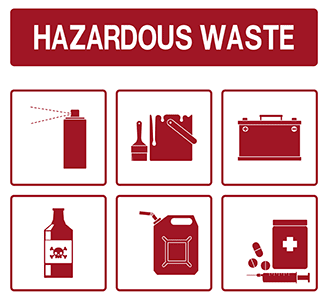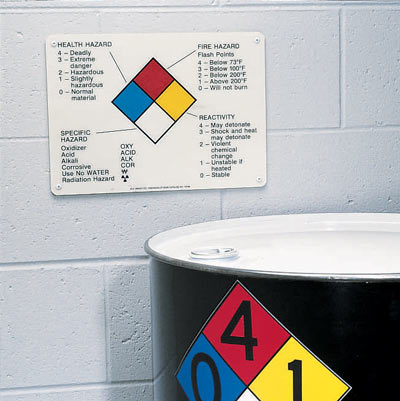Labels for Safety, Visuals and Facility ID Desktop Printers
Labels for Product, Wire and Lab ID Benchtop Printers
Labels for Safety, Visuals and Facility ID Desktop Printers
Labels for Product, Wire and Lab ID Benchtop Printers
Safety and Facility ID Desktop Printers
Product, Wire and Lab ID Benchtop Printers
Barcode Scanner and Printer Kits
Barcode Scanner and Printer Kits
PaintStripe Floor Marking Stencils
Valve Lockouts & Hose Lockouts
Group Lock Boxes & Permit Control
Brady Safety Lockout Tagout Services
Pipe Marker Accessories & Mounting Brackets
Maintenance and Production Tags
Calculators and Assessment Tools
Product Finders and Data Sheets
Proper identification and labeling is foundational to a safety manager’s success. They help blend speed and efficiency into operations and put information front and center for workers. Often, information that directly affects health and safety.
Hazardous waste labeling is no exception.
Hazardous waste labels warn of inherent danger if not disposed of or handled properly. Missing or inadequate labeling can produce fines, adverse health effects, environmental contamination and more. RCRA regulations and EPA labeling requirements ensure labels are uniform and effective.
Let’s explore the regulations that govern hazardous waste label requirements, required text (including a hazardous waste label example) and labeling best practices.
Hazardous waste is a subset of solid waste that may be detrimental to human health or the environment. In the United States, the Resource Conservation and Recovery Act (RCRA) gives the Environmental Protection Agency (EPA) the authority to control hazardous waste from cradle to grave.
It can take many forms from many sources, such as the byproduct of a manufacturing process or a product that you use or encounter daily, from cleaning fluids to battery acid. This makes the term “solid waste” a misnomer, as it can exist as a solid, liquid, gas or sludge.
Hazardous wastes under RCRA regulations in Title 40 CFR, Part 261 are divided into two major categories:
Reference the EPA’s Hazardous Waste Identification Process to determine if your material in question is a hazardous waste.

For non-bulk packaging of hazardous material, the EPA’s hazardous waste container labeling requirements state that a label must include:
While the EPA provides specific regulatory guidelines, there is no standardized format (e.g., colors, size or text order).
RCRA regulations allow states to develop more stringent regulatory programs. After review by the EPA, states may then be able to take over responsibility for implementation. As such, it’s important for you to check with your state’s authority having jurisdiction regarding hazardous waste labeling requirements and whether further guidelines exist.
While there are no requirements regarding size, color or format spelled out by the EPA, it’s best practice to make the label stand out so workers and inspectors are able to locate and identify hazardous waste effectively. Here’s an example of a commonly used hazardous waste label.
Browse a full collection of hazardous waste labels designed to stand out in your facility and help you stay compliant with hazardous waste label requirements.

While the EPA regulates pre-transport requirements, the Department of Transportation (DOT) regulates requirements for hazardous waste once it’s in transport. For shipments of hazardous waste, the DOT requires each non-bulk package (maximum capacity no more than 119 gallons) to display, at a minimum:
Reference Title 49 CFR, Part 172 for more information and browse common right-to-know labels used during shipping.
Universal wastes are hazardous waste that can be collected under streamlined collection standards. Federal universal waste regulations are found in Title 40 CFR, Part 273 and apply to five types:
While you know your facility and needs best, here are some best practices for additional hazardous waste labeling requirements:
Easy labeling and compliant labeling aren’t mutually exclusive – not when you trust the labeling experts. Rely on Brady for quality identification solutions that last. Shop our full assortment of hazardous waste labels or call or email anytime to speak with a labeling expert.

As workplace hazard communication evolves, you need to keep up to date to ensure safety.
Learn More